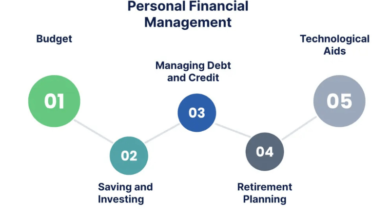How to Plan for Retirement in 2025 The Ultimate Retirement Planning Guide for 2025

Everything You Need to Know Which retirement plan is right for you? If you plan to eventually leave the workforce, retirement is a key financial concern that you need to prepare for so that you can continue living the way you want to. In the ever-changing financial environment of 2025, it is vital to grasp and comprehend the 401(k) plans and accounts available to you, in order to develop a personal financial strategy and work toward your goals. Here’s a guide to help you navigate the complexities of planning for retirement.
Differentiate Between Retirement Plans
An Introduction to Different Retirement Plans 401(k) Plan:
401(k) Plan:
A 401(k) is an employer-sponsored retirement account that allows a worker to set aside a portion of their pay, before taxes. Several employers also provide matching contributions, which could give your savings a huge boost over the years.
403(b) Plans:
Like 401(k) plans, 403(b) plans are offered to employees of public schools and certain tax-exempt organizations. Such plans generally provide a narrow range of investment choices.
457 Plans:
457 plans are deferred compensation plans intended for use by state and local government employees. They come with some unique advantages like being able to pull out funds without penalty in certain situations (e.g., retirement or separation from service).
Traditional IRAs versus Roth IRAs:
Traditional IRAs grow on a tax-deferred basis, which means you pay taxes on your withdrawals in retirement. Roth IRAs grow tax-free, with withdrawals generating no tax if declared before a specific time.
There are several different retirement plans for employees and self-employed based on your income and financial objectives. Curious to see which plan may be right for you?
Set Clear Retirement Goals
How much do you need to save if you aren’t sure what you want to do in retirement? The following should be taken into account:
- Intended Retirement Age: Determine the age at which you plan to retire, keeping in mind elements such as life expectancy and health.
- Calculate the income: You need to live the life your choose, factoring in inflation and healthcare (it is only going to get more expensive).
- Healthcare planning: Consider your costs for long-term care; consider HSAs to help.
Take Stock of Your Current Financial State
- Analyze your existing financial condition: Assess how much you can spend on your retirement savings.
- Income and Expenditure: Review current income and monthly expenses as well as any changes in your spending in the post-retirement stages.
- Existing savings: Look at your retirement accounts, savings and investments and see where you are starting from.
- Debt Management: Work to pay off high-interest debts before retirement to avoid sourcing liquidity.
Create a Plan for Saving and Investing
They say that slowly but surely is the best way to create a retirement:
- Create a Strong Savings and Investment Plan: It’s a key element in growing your retirement fund.
- Start Early and Continue Saving: Start saving as soon as you can. Establish automated contributions so that you commit to regular saving.
- Why You Should At Least Start Planning for Early Retirement But Invest: Spread your savings across different asset classes (stocks, bonds, real estate) for risk balance. Rebalance occasionally to keep your portfolio in line with your risk appetite and retirement horizon. Maximize employer contributions to retirement plans.
Plan for Taxes
It’s important to understand the tax repercussions of your retirement savings:
- Tax-Deferred Accounts: Contributions to traditional retirement accounts lower your taxable income in the year of contribution, but withdrawals are taxed as income.
- Tax-advantage Growth: Roth accounts grow tax-free and distributions are not taxed as long as certain requirements are met.
- Required Minimum Distributions (RMDs): Understand RMD rules for tax-deferred accounts which require withdrawals starting at age 73.
Frequently Revisit and Revise Your Plan
Life circumstances and financial markets change, so check your retirement plan regularly:
- Annual Reviews: Examine your retirement goals, savings rate, and investment performance and make adjustments.
- Get Detailed Updates: Stay informed of developments in tax law, retirement plan regulations, and economic conditions that can affect your plan.
- Engage with Professionals: Regularly touch base with financial advisors for personalized guidance and to ensure that your plan stays on course.
Learn and Keep Up With Current Events
The more you learn about retirement planning, the more effectively you can make decisions:
- Financial Literacy: Take the time to understand the fundamentals of finance, including investment types and economic indicators.
- To study source credits: Turn to trustworthy financial websites, books, and seminars to broaden your understanding.
- Participate in Brenefits: Sign up for retirement-oriented forums or groups to swap stories and insights with others.
Conclusion
From comparing different retirement plans to setting specific financial targets, to evaluating your current financial state and formulating a strategic savings and investment plan, successful retirement planning in 2025 hinges on adopting a holistic approach. Ongoing education, and re-evaluating goals regularly, are so important in adapting to external factors, and continuing your financial security long into the future. Make sure you will spend a comfortable and enjoyable retirement by planning now.
Start planning for your retirement NOW assess your current financial status, establish definitive targets and contact financial experts. Share this guide with your friends and family so they can start their own journey toward financial security.





